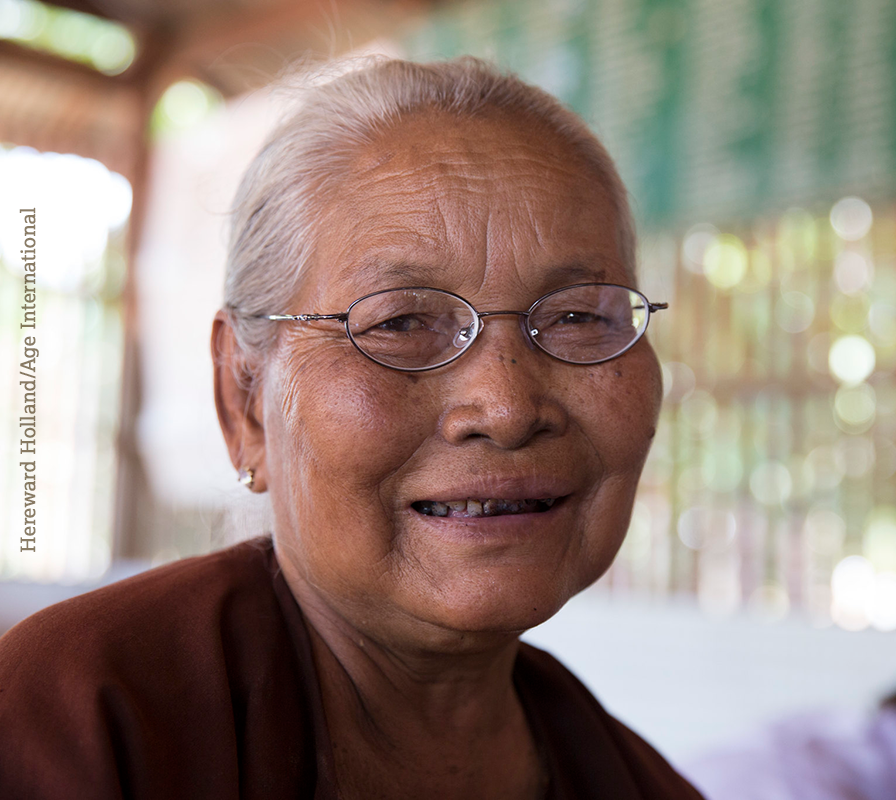At least 300 family kits have been provided by HelpAge International to five camps for internally displaced people in the Magway region in west Myanmar.
“Older people are particularly vulnerable during disasters and are often left out of emergency responses,” said Anne-Laure Hallaire, Deputy Country Director at HelpAge International Myanmar.
“They have very specific needs: they’re less mobile, may need special diets, can feel isolated and distressed, and may find it difficult to access sanitation facilities”.
Heavy rainfall in the wake of Cyclone Komen on 30 July added to the monsoon floods, resulting in 96 deaths and more than 589,000 people affected. More than 122,200 households have been displaced and floods have reportedly damaged 520,000 acres of farmland, posing a long term risk to food supplies[1].
HelpAge has been working in Pwint Phyu, along with 35 volunteers from the National Older People’s Federation and National Ageing Networks, helping families in Magway, declared a disaster zone on 31 July. There are currently no other humanitarian organisations active in the vicinity. HelpAge have also been working with the Department of Social Welfare and Department of Rural Development.
One resident, Daw Hla San, 50, fled Kyaung Su village, with her family to a nearby camp.
“When we arrived here first, we could not buy anything to eat and had to depend on what we brought from home. Here in the camp, the biggest challenge is taking care of the older people and children as there’s not enough space to sleep inside the building. I’ve only slept for two nights out of the last six. But we have been provided with rice, cooking oil, purified water, instant noodles, dry-fish, and potatoes.”
In Pwint Phyu township, out of 205 villages, 195 have been affected, with 147 completely flooded. Approximately 25,597 households have also been affected with 19 temporary evacuation shelters set up as of 5 August.
By: Ed Knight
Related post:
Initial assessment trip to flooded areas in Pwint Phyu Township, Magway Region
Photo gallery
[1] Data source: OCHA (as of 8 Aug 2015) http://www.unocha.org/myanmar


